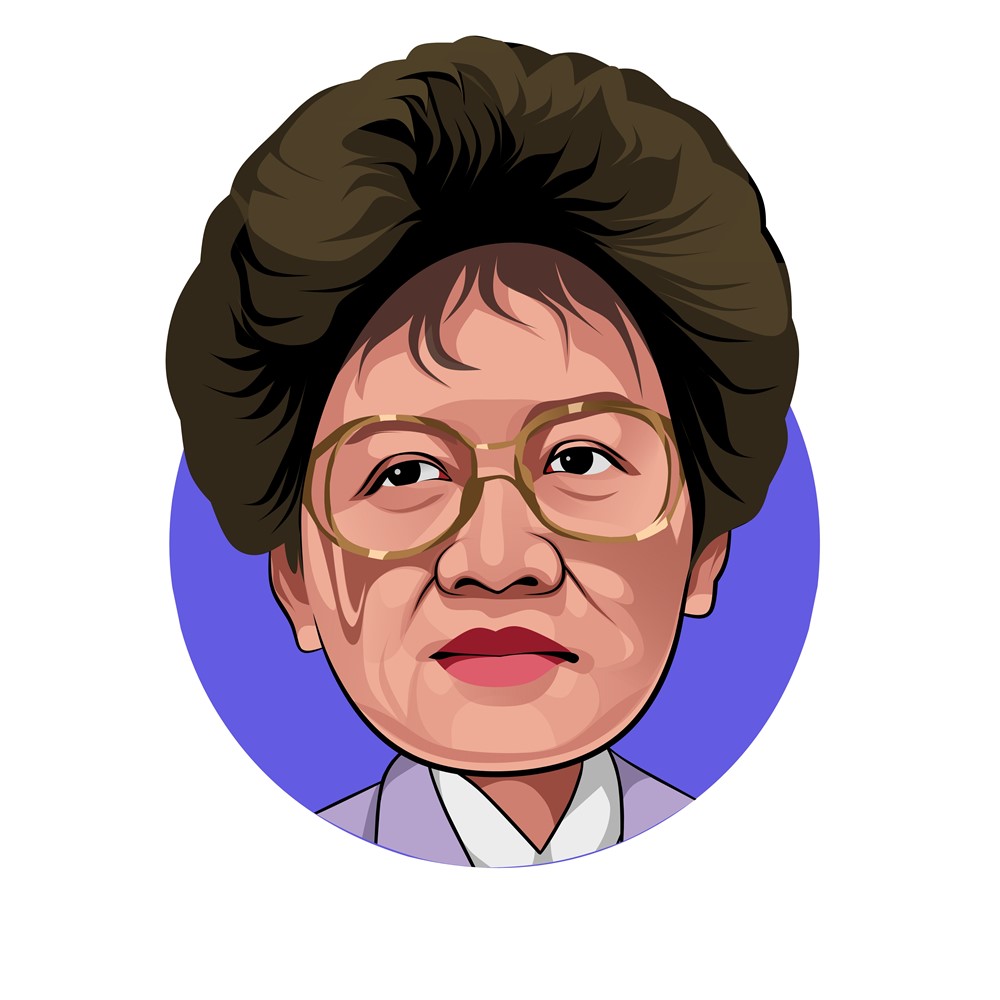
Corazon Aquino was the 11th president of the Philippines and the first female president in the country’s history. She was assassinated in 1981. Before her assassination, she was a member of the Council of Women World Leaders. This article explores the life and legacy of Corazon Aquino.

Corazon Aquino was born on April 18, 1923, in the Philippines. Her father, Benigno Aquino, was a well-known figure in Philippine politics. He was the youngest governor and senator in history, and was a staunch opponent of the dictator Ferdinand Marcos. Marcos’ regime was marked by human rights violations and corruption. In 1972, he declared martial law, removing the Philippine Constitution and depriving the country of democratic rights. During this time, Corazon Aquino campaigned for her husband while in prison and was later allowed to relocate to Boston.
Benigno Aquino was a member of the Liberal Party, and his wife, Corazon, served as her husband’s bridge to the outside world. She helped him achieve national prominence by passing on his notes to the press. The couple had five children together, and Corazon remained a housewife during her husband’s political career. In fact, she declined to stand on stage during his campaign speeches and instead watched them. After Benigno’s assassination in 1983, Corazon Aquino was transformed into the symbol of Philippine reform.
During the Aquino administration, the Philippines experienced several natural disasters. There was the 1990 Luzon earthquake, and Tropical Storm Thelma, and the Philippines was hit by coup attempts. Eventually, Aquino was replaced as president by Fidel V. Ramos, and in 1992, Aquino returned to civilian life.
As the first female president of the Philippines, Corazon Aquino made a significant impact on her country and the world. She has been described as the “mother of Philippine democracy” and the “housewife who led a revolution.” She was honored with major international awards, including the United Nations Silver Medal and the Women’s International Center’s International Leadership Living Legacy Award.
After graduation, Corazon Aquino left law school to marry her first husband, a journalist with political aspirations. In 1967, he was elected as the youngest senator and governor in the Philippines. While his political career took off, Corazon remained at home to raise their five children. She never joined him on stage during campaign speeches. She even sold a prized inheritance in order to help him fund his campaign.
Corazon Aquino was born on January 25, 1933 in Tarlac, Philippines. She was the first female president of the Philippines and the first female president of Asia. She served a single term, but helped bring back democracy to the country. Her supporters tried to remove her from office, but she survived and continued to speak out against poverty and violence in the Philippines.
Corazon Aquino attended private schools in the Philippines and New York. She was also educated at the College of Mount St. Vincent in New York City, where she majored in French. After graduating from college, she went to law school at the Far Eastern University in Manila, where she met her husband Benigno Aquino, Jr.
The murder of Corazon Aquino was a sensational case when it took place almost 40 years ago. The former president was shot in the back of the head by an unknown man. The incident caused a hysterical outcry among Filipinos, and it led to the establishment of a fact-finding board. Its report found that the assassination was not an accident. In fact, a conspiracy theory was involved. The investigation revealed that two people, Pablo Martinez and Galman, conspired to kill Aquino. Both men served prison sentences for this murder. However, despite being convicted, they filed appeals, saying that they knew of the plot but had not committed it themselves.
While Aquino was president, she failed to pass any major reforms. Rather, her reforms were half-hearted. Her controversial Comprehensive Agrarian Reform Program (CAP) did little to address the growing land grabbing problem. Many landowners did not want to redistribute their land. In order to avoid this, they reclassified part of their land as commercial, and distributed their shares to tenant farmers. At the same time, they still retained their family hacienda.
Following Aquino’s death, the Philippines was plunged into crisis. As a result, outward capital flows reached $2 million per day. Aquino’s funeral was attended by tens of thousands of Filipinos. The funeral procession turned into a political rally against the Marcos regime, and a large crowd of demonstrators turned out to protest the assassination.
Corazon Aquino was a member and leader of the Council of Women World Leaders (COWWL). It was a coalition that was first established in 1984 to unite women around the feminist agenda. Even though the coalition consisted of individuals from different political parties, it maintained its autonomy and independent status. Its founding members were women who had taken the lead in the feminist movement in their home countries.
Corazon Aquino was married to Benigno Aquino. After Benigno Aquino died, she returned to the Philippines, where she was a prominent figure in anti-Marcos political activism. In response to the rising anti-Marcos sentiment, Corazon Aquino decided to run for president. However, Marcos was convinced that he still had the support of the Filipino people. In response, he decided to call an election in February 1986, which Aquino won.
After her presidential term, Corazon Aquino continued to travel and speak on issues of democracy, development, and human rights. She spoke in Manila at the 1994 UNESCO World Commission on Culture and Development, and she continued to lobby for the release of Burmese democratic leader Aung San Suu Kyi. Aquino was a lifelong member of the Council of Women World Leaders, a global network of women leaders.
Aquino attended private schools in the Philippines and in Philadelphia. She received her bachelor’s degree from the College of Mount Saint Vincent in 1949 after majoring in French. She went on to law school at the Far Eastern University of the Philippines. She married her husband Benigno Aquino Jr., who had been a lawyer.
Corazon Aquino was criticized for a number of reasons during her presidency, most notably her market liberalization agenda. Although she was praised for bringing down the Marcos regime, she was also criticised for restoring many of Marcos’ power structures. Aquino’s inherited problems, as well as those of her predecessors, led to her being widely criticized for her policies.
Aquino’s government also pushed for land reform in the country. In the 1980s, a land reform law was passed in the Philippines that restricted property ownership to 12 acres. This law essentially gave landowners the right to sell their land to the government for a fixed price, or to peasants for discounted rates over 20 years. The government set up a Department of Agrian Resources to manage land transfers.
During Aquino’s presidency, the Philippines suffered from a high national debt, and widespread poverty. The military was heavily invested in Marcos’ regime, and its loyal officers frustrated Aquino’s attempts to settle disagreements with them. Moreover, the military remained a repressive force in the country’s society, despite Aquino’s efforts to reform the system. Meanwhile, Aquino’s economic policies also included peace talks aimed at resolving the Moro conflict. She also created an Autonomous Region in Muslim Mindanao, but the government’s policies were also criticized after the Mendiola Massacre, which resulted in the killing of peaceful protesters by the Philippine military.
After leaving office, Corazon Aquino traveled to abroad to speak on issues related to democracy, human rights, and women empowerment. She also spoke at the 1994 UNESCO World Commission on Culture and Development. Her support for human rights and the right to freedom was recognized by Pope Benedict XVI, who praised her dedication to freedom and rejection of intolerance. She also served as a member of the Council of Women World Leaders.
Agrarian reform was one of the main issues of the Aquino administration. Prior to her election, about four or five research groups were already analyzing how best to deal with the Cojuangco family’s hacienda. However, after Aquino took office, she began to retreat from her earlier commitments to agrarian reform. This came to a head when the Cojuangco family filed a motion in the Court of Appeals, claiming that an earlier order had deprived them of their hacienda. In 1986, Aquino’s government was compelled to appeal the decision of the court to sell Hacienda Luisita to tenants. In the aftermath, the Minister of Agrarian Reform responded to questions about Luisita.
The first step in land reform was to create an executive order to implement the EO. But many Filipinos were concerned that the new Congress would be dominated by landlords. While this Executive Order was a big step forward, the law was not enough and the government was left with many unanswered questions.
The next step in agrarian reform was to develop a comprehensive agrarian reform program. In 1988, President Corazon Aquino ratified Republic Act 6657, also known as the Comprehensive Agrarian Reform Program. The law addressed many of the problems associated with earlier agrarian policies. It covered all agricultural lands.
Max Ernst Among the most famous artists of the twentieth century, Max Ernst was a
Angelina Jolie DCMG – An Icon in Hollywood Whether you love her as an actress
Barack Hussein Obama II Barack Hussein Obama II served as the 44th President of the
A Brief Look at Ben Affleck Benjamin Affleck is a well-known American actor and director.
Alicia Keys Alicia Keys is a famous American singer, songwriter and pianist. She was born